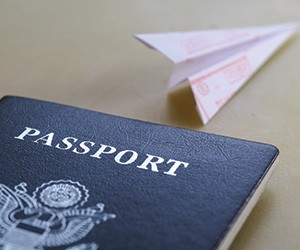Call it a tale of two countries.
In Canada, U.S.-based meeting planners and organizations can tap a variety of Canadian government programs and select companies to help them expedite the cross-border customs process for shipping materials to their north of the border events.
In Mexico, though, the process is more convoluted, so tapping into the experience of planners who have been there and done that is advice well taken.
Shipping Event Materials Across U.S. Borders into Canada
Expediting the shipment of event materials from the U.S. into Canada is a priority of the Canadian government, which has a service set up just to smooth the process. Custom-clearing specialists can set up the process at no charge, hoping to earn business by providing services later in the process.
“It’s a two-way street, so to speak,” said Remy Perrot, director of sales for customs and event logistics services company Davidson & Sons Custom Brokers. “Half of the issue is getting the shipment into Canada, but the other half of the equation is getting the shipment back into the United States.”
For the first half of the assignment, at least, the Canadian government plays an immensely cooperative role via its Canada Border Services Agency (CBSA) International Events and Convention Services Program. Following is advice Perrot has for bringing events goods north of the border:
Tap the CBSA: The CBSA has three key programs that aim to lessen the hassle of transporting goods to Canada.
“What you need to do is formally apply to do the program to get event recognition,” he said. “Once your event is officially recognized by that government program, all meeting and event materials can enter the country duty free and tax free. And most of the time a service called Border to Show is granted when the host organization appoints a broker to work on their behalf.
[Related Content: 7 Tips for Bringing Meetings Materials to Canada and Mexico]
“What Border to Show does is allow shipments to flow through the border without being customs cleared first, and the materials go directly to the event venue where the official customs brokers, such as Davidson and Sons, performs the official customs clearance on-site at the venue,” Perrot added.
“That removes the potential of delays,” he continued. “The exhibitor can have access to those goods and set up their booth before it’s custom cleared. Once the event is officially recognized, the CBA issues an official recognition letter that can be distributed to the non-Canadian attendees.
“Automatically, all of the land and air border crossings are notified,” Perrot said. “It makes it easy.”
Getting attendees such as exhibitors cleared in advance allows them to carry banners and other materials.
Visa Smoothing: The Special Events Unit of Immigration, Refugee and Citizenship Canada works in conjunction with the CBSA to help expedite visas for international attendees who may be required to obtain one. It’s critical to begin work on visas early in the process, depending on where the attendees originate from.
Know Your Tax Rebates: The Foreign Convention Tax Rebate Program allows foreign organizations to apply to receive a rebate on any taxes they spend on any goods and services to run their event in Canada. The rebate fluctuates depending on the province, but can be as much as a 50 percent rebate on F&B and 100 percent of the tax on goods and services such as hotel rooms.
Davidson & Sons performs all initial-stage work for free, and then hopes to handle event logistics such as storing materials in a warehouse and delivering them to the show, along with custom clearance services.
Shipping Event Materials Across U.S. Borders into Mexico
Gareth Heyman, Wizard of All Things for his incentive and event company, MorEvents, offered the following four tips for getting events goods south of the border smoothly:
Consolidate: “Depending on how much you ship, I would certainly use a shipping consolidator. A ‘significant’ [shipment] can be as small as six or eight boxes.
“Oftentimes they can not only be your friend in guiding in what way to ship it, they can actually save you money and help solve a problem when you come into customs. I plan events for a living, they ship for a living, so they get it and tell you how much time they need, how to pack it—all the elements.”
Bring It Yourself: “If you don’t have too much, pay the extra charge and have you and your staff carry it with you, that way you know where it is and it’s not stuck. If you have to pay at the airport at least you know where it is and it’s a much quicker process. If not, you may not know where it is in customs and it may take a day or two, and your event may be over by the time you get it through customs.”
Use DHL: “The bigger carriers obviously ship into Mexico. I avoid FedEx on any of my international shipping. I rely on DHL. They’re more communicative; it feels like they’re a partner. They don’t say, ‘Well, it’s stuck in customs.’ They help guide you.”
Label Liability: Use proper labeling. It sounds silly, but sometimes it gets to a destination fine but it gets lost in the hotel. Maybe it was addressed to the sales manager and not the group manager?
“Include as much detail as possible. I have probably spent at least as much time trying to chase things down in a hotel as I have dealing with customs.”
Perrot added the following advice:
“Go with the preferred supplier for shipping and customs, and they’re often near the venue,” he said. “If something does happen with that supplier, or you are not getting responses, they have the resources to go to the vendor and talk to them. Then the event manager can talk to the supplier as well.
“You have that added safety,” Perrot added. “Contact a major conference facility in Mexico and ask them who they recommend and reach out to that supplier directly.”
Additional Contacts:
Business Events Canada
604.404.6768
Mexico Tourism Board
+52.800.262.9128






